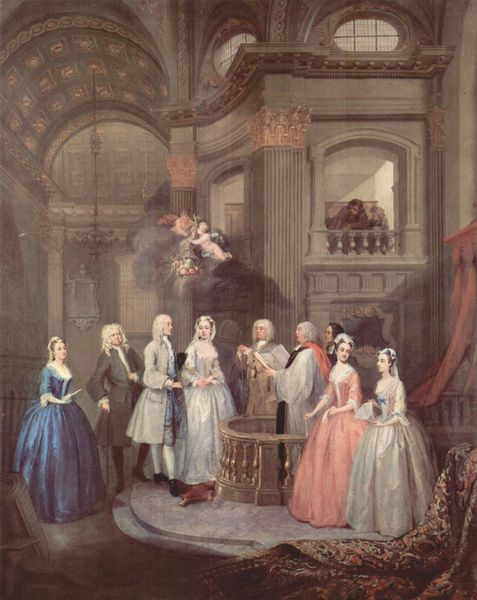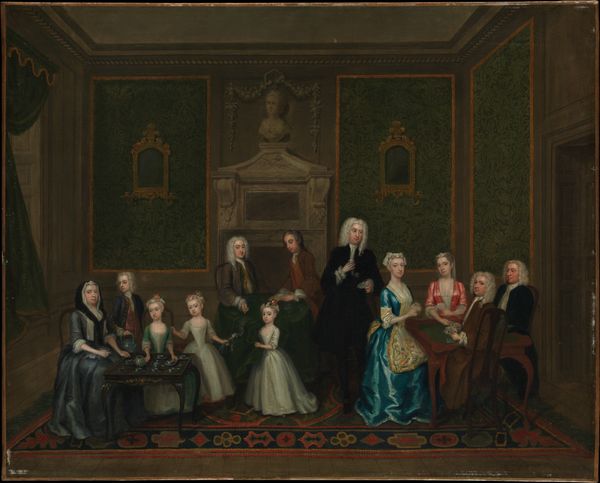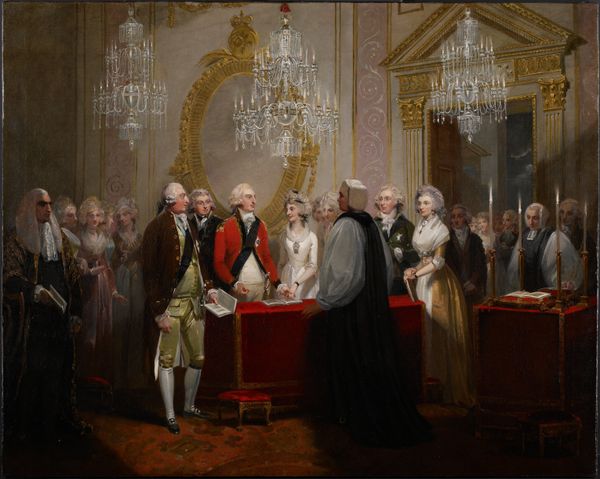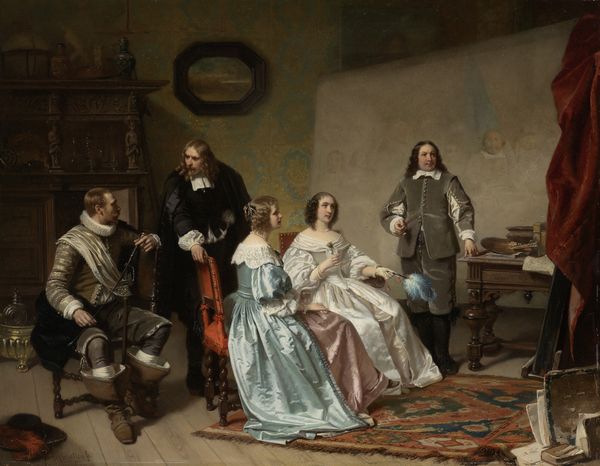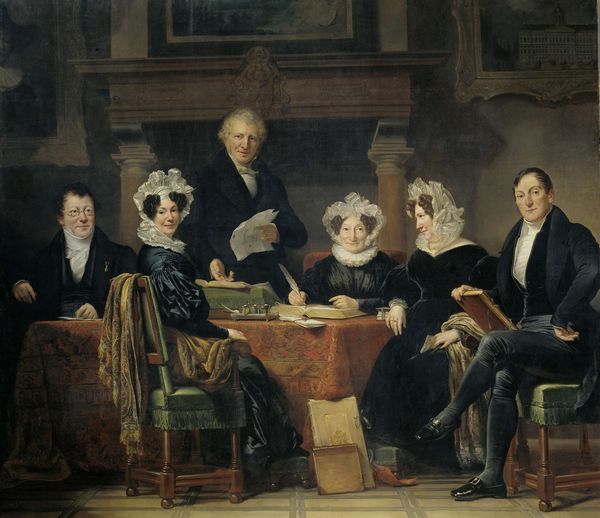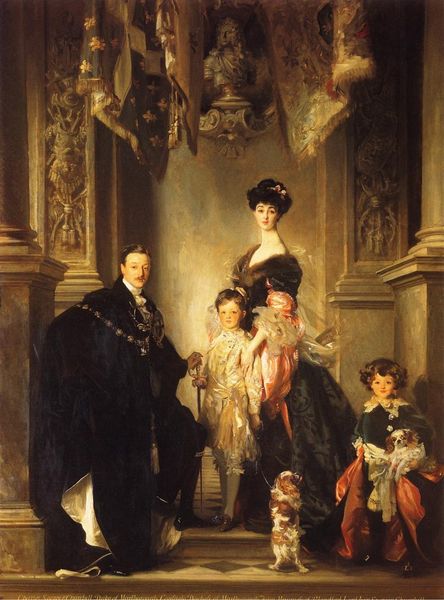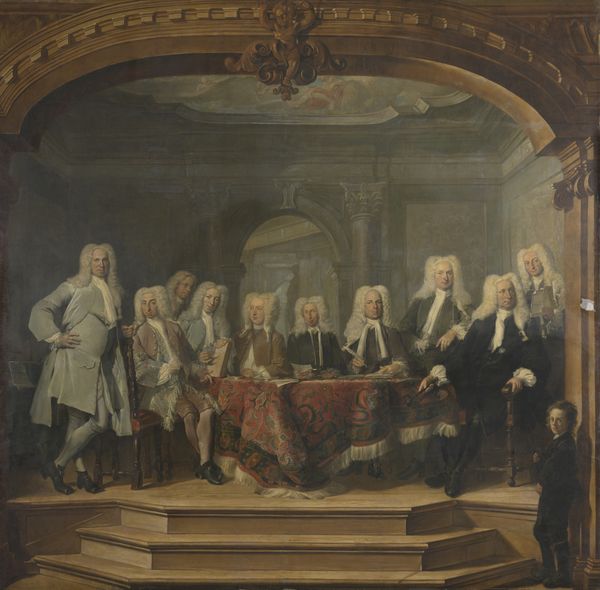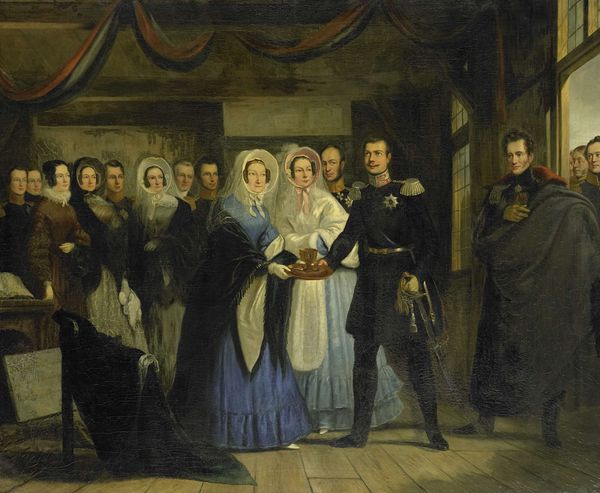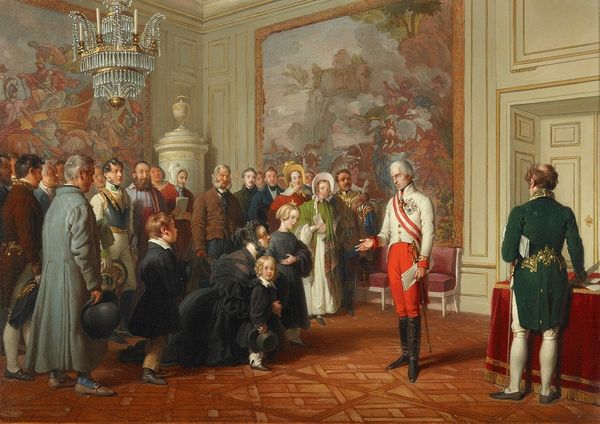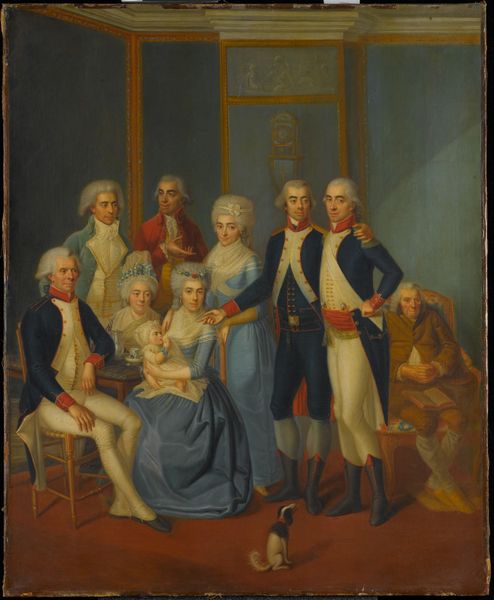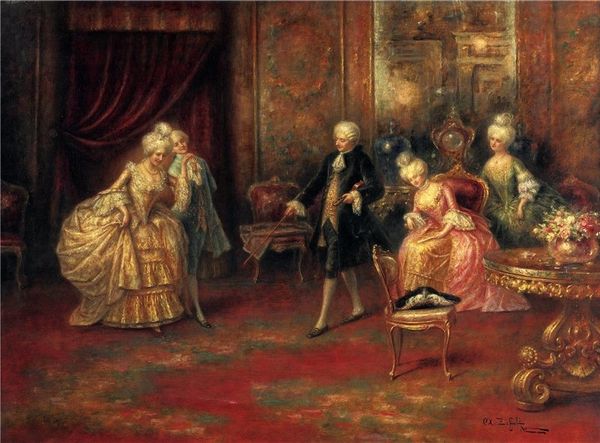
Dimensions: support: 994 x 1162 mm frame: 1245 x 1405 x 120 mm
Copyright: CC-BY-NC-ND 4.0 DEED, Photo: Tate
Curator: Joseph van Aken’s “An English Family at Tea” captures a moment of domesticity, rendered in oil on canvas. I’m immediately struck by the stiff formality, aren’t you? Editor: Absolutely. There's a sense of performance here. Note the carefully arranged tea service, almost like a still life within the portrait. Tea itself, newly fashionable, signaled wealth and refinement. Curator: And the classical statue looming in the background! Such a blatant display of cultivated taste, though I do find it slightly humorous how it seems to be judging the family. Editor: It’s aspirational, isn't it? The statue, like the tea, symbolizes the family's desire to align themselves with timeless ideals, even as they participate in a very specific, contemporary ritual. Curator: You see, it makes me wonder what they’re really thinking behind those powdered wigs and polite smiles. Editor: Perhaps they are wondering the same about us. It makes me question the difference between what is posed and what is intimate.
Comments
tatebritain 7 months ago
⋮
http://www.tate.org.uk/art/artworks/van-aken-an-english-family-at-tea-n04500
Join the conversation
Join millions of artists and users on Artera today and experience the ultimate creative platform.
tatebritain 7 months ago
⋮
In the 18th century, tea was an expensive commodity, as were the items shown here related to its consumption: the tea table, silver and porcelain. Tea was a bitter drink, sweetened with sugar produced in British colonies in the Caribbean with the labour of enslaved African people. Here, the caddy (tea box) is shown in the foreground. Its contents were normally kept locked by the lady of the household, shown here dispensing the precious leaves. Tea drinking demonstrated wealth, domesticity and genteel informality. In the 18th century, it came to epitomise civilised behaviour for British people. Gallery label, September 2024
